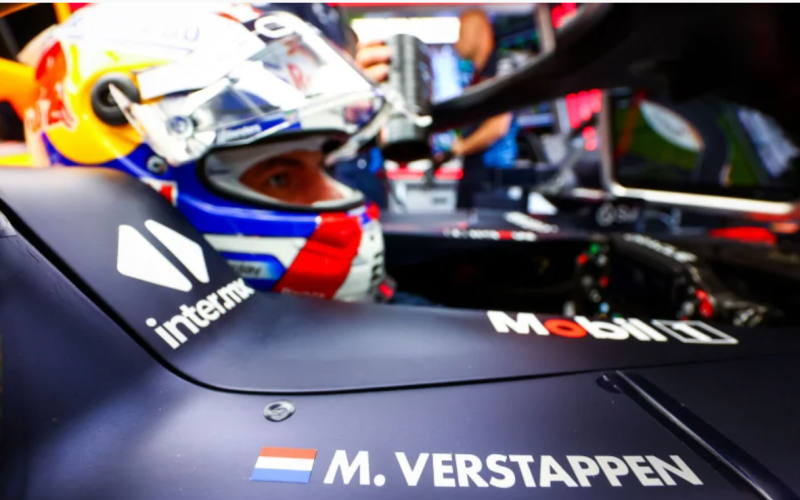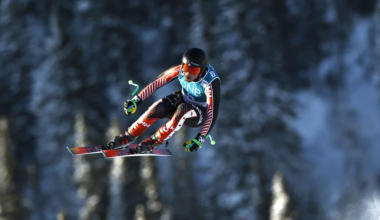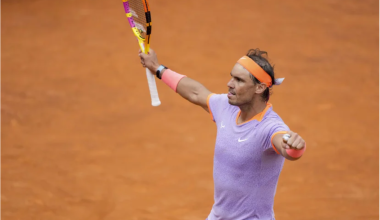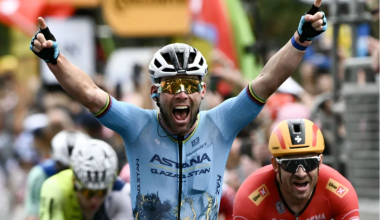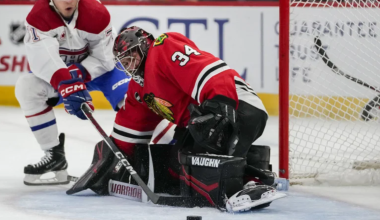Many racing fans will be hoping for rain this weekend during the Formula 1 Canadian Grand Prix in Montreal. It won’t be because of petty jealousy toward those who will be lucky enough to have a spot around the Gilles-Villeneuve circuit on Île Notre-Dame, but because it would be a way to inject an element of uncertainty into a competition whose outcome too often seems decided in advance.
With the possible exception of Max Verstappen’s supporters, F1 fans were left frustrated by last season, which the Dutchman outrageously dominated at the wheel of his Red Bull, with 19 wins in 22 races, quickly removing any suspense and interest in his quest for a third consecutive drivers’ title.
We thought we were doomed to see more of the same this year, with another series of victories at the start of the season, until we saw the gap between the champion and his pursuers narrowing over the last month. To the point where the likeable McLaren driver Lando Norris stole first place from him in Miami , and where the Red Bulls experienced a rare slump on the winding and bumpy streets of the extraordinary Monaco circuit two weeks ago, finally allowing the little guy from the area, the Monegasque and Ferrari driver, Charles Leclerc, to triumph on home soil .
This was enough to raise hopes of a decline in Red Bull’s dominance and an increasingly tight fight between McLaren, Ferrari and Mercedes until December.
“It doesn’t matter if one team dominates the competition for a while,” says Canadian Grand Prix promoter François Dumontier. “Formula 1 is also a technological development bench. It doesn’t matter, but the others have to catch up eventually. And in the meantime, we’re more interested in the battles that are going on behind the driver who’s racing in front.”
A very relative decline
The relative decline of the Red Bull team may be due to the catching up done by other teams as well as the difficulties it has encountered in recent months, including off the track, explains Quebec racing driver Bertrand Godin. He is thinking in particular of the accusations — ultimately dismissed following an internal investigation — of “inappropriate behavior” towards an employee against his boss, Christian Horner, and the announcement of the upcoming departure of the genius idea behind the success of his cars and so many others before him, Adrian Newey.
The loss of Red Bull’s hegemony remains relative for the moment, however, continues the driver, columnist and presenter. “You design a car by making choices and compromises. The last races took place on tracks that were less suited to the Red Bull’s strengths, but they remain those that present the best balance for an entire season.”
The blue, yellow and red single-seaters are said to perform best when they can stay glued to the track, that is, when the circuits are not too bumpy and do not require climbing the kerbs in the turns. The track on Île Notre-Dame belonged to this category until it was recently completely resurfaced, in addition to being slightly lowered under the Pont de la Concorde for safety reasons, and having its drainage improved. “We will continue to climb on the kerbs, but the track should now be a billiard table,” says François Dumontier.
Several pundits have said they expect McLaren to do relatively well there and for second place to be a matter for Red Bull or Ferrari. François Dumontier’s heart is leaning towards McLaren’s other driver, Oscar Piastri, because a victory in Montreal would be his first in Formula 1, like six others before him since 1978, including Gilles Villeneuve, Lewis Hamilton and Daniel Ricciardo.
The outlook is less bright for local hero Lance Stroll. Unlike other top teams, his team, Aston Martin, tends to start the season strongly but struggle to improve the performance of its cars later on, he admitted at a press conference on Thursday. “That’s unfortunately been the trend since last year. But there’s still a lot of racing ahead of us.”
The usual routine
The dominance of Red Bull in recent years is nothing extraordinary. It was preceded by an equally insolent domination of Mercedes and its star driver, Lewis Hamilton, or before them, Ferrari and Michael Schumacher.
This type of reign often begins after a major change in the technical rules of the sport to which a team has been particularly successful in adapting, giving it a technological lead that other teams then struggle to catch up with.
“There’s always a lot of focus on the drivers, but the cars are just as important, if not more important ,” Godin said. “Racing is a team effort that relies heavily on the hundreds of engineers and other employees, on the pit lane and in the factory, who develop the cars.”
A major change to Formula 1’s technical rules is set to occur in 2026. Affecting the engines, dimensions and aerodynamics of the cars, it will aim in particular to take a further step in the transition already underway towards hybrid engines and the use of green fuel, but also to improve the spectacle on the track, encourage overtaking and tighten up the competition. “There are already teams that are no longer working at all on their current cars and are focusing entirely on those that will come in 2026,” says François Dumontier.
New details of this new regulation were also revealed on Thursday by the Formula 1 authorities. The news has initially been met with mixed reception from drivers. On the one hand, there was rejoicing at the desire for continuous improvement that this demonstrates; on the other, there was concern that we would once again find ourselves with a team that produces a single-seater that is clearly better than the others and that it would then take months, if not years, to try to catch up with.
“Every time we change the rules, we see a big gap appear. Especially when it affects the engines. We were only just starting to catch up with the Red Bulls,” lamented Oscar Piastri.
“Of course the best thing would be to keep the rules as constant as possible,” added fellow Red Bull driver Sergio Perez of Mexico. “Otherwise we have a year and a half to enjoy the existing rules and the increasingly tight competition.”
Whatever happens, we should be treated to a good show on the Gilles-Villeneuve circuit this weekend, says Bertrand Godin. “But we’re hoping for rain. There’s nothing like rain to shake things up.”
